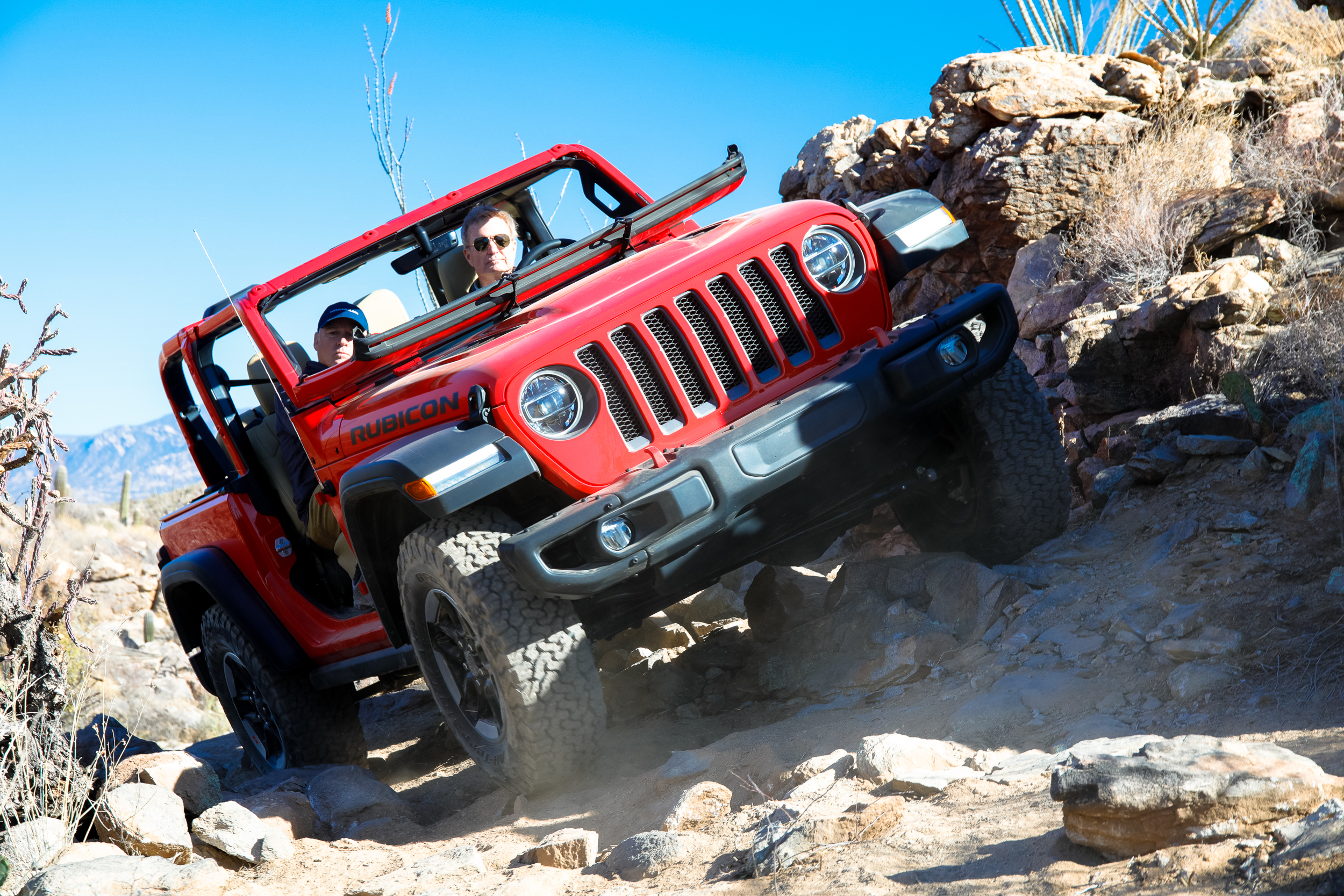I've always loved this image of a Series I Land Rover tilted at 45 degrees, with an advisory for drivers that the "safe operating angle" is 30 degrees. When was the last time you saw a consumer vehicle advertise its side slope capability, complete with a photo to prove it?
Negotiating a significant side slope is without doubt the most nerve-wracking maneuver you can do with a four-wheel-drive vehicle—at least it is for me. I remember not too long after I got my FJ40 sticking one of those liquid-filled angle gauges on the dash (Roseann annoyingly referred to it as the "tilt-o-meter"). I took the 40 out on a local trail and put it on what felt like a pretty steep side slope in a rutted section of the track, then looked at the gauge . . . which read 15 degrees. It was humiliating. I drove farther up the slope until I got to 20 degrees, which seemed seriously tipped. At 25 degrees I surrendered, even though I knew intellectually that was well below the danger point for an FJ40. I turned the engine off, left it in gear with the parking brake on, and got out to see what it looked like from someone else's viewpoint.
Oh. Jeez. Seriously? Drawing an imaginary line from the outside tire straight up it was clear there was all kinds of weight left on the safe side of the line. Back inside it stilled looked scary, but significantly less so.
Side slopes always look steeper from inside the vehicle. Photo courtesy Matt Scott
I've since had the FJ40 tipped somewhat beyond 25 degrees (the "tilt-o-meter," however, is long gone, replaced by an iPhone app when needed . . .), and had a Jeep Wrangler Rubicon to significantly beyond that. But those kinds of angles remain wince-inducing for me.
And that's a good thing, because side slopes in the real world aren't like tipping a vehicle up on a table in a garage for a photo. When you are moving across an incline of dirt or mixed substrate or rocks, that safe-but-thrilling 20 or 25-degree angle can transition to a very-possibly-unsafe 30 or 35 degrees or worse in an instant if a downhill tire hits a divot or an uphill tire hits a rock. The movement of the vehicle then adds momentum to that tilt, exacerbating the situation. Also, if traversing a steep and loose slope and the vehicle starts to slide sideways and then catches grip again suddenly, or the downhill tires dig in, it's as if someone on the high side of the vehicle gave it a really good shove.
Negotiating a loose, sandy side slope in Peru above the Pacific. Even a relatively lightweight camper raises the center of gravity significantly.
In the syllabus for the N.P.T.C. (National Proficiency Test Council) certificate in four-wheel-drive proficiency, the guidelines for negotiating side slopes don't mince words: "Avoid if possible" is number one. But what other precautions should you take?
First make sure there is a recognizable track across the slope, to prove others have crossed it successfully. A well-used track also helps ensure there are no surprises in the substrate.
Follow the golden rule of handling any challenging situation in a four-wheel-drive vehicle: "As fast as necessary; as slow as possible."
Watch the placement of your tires to avoid low spots on the low side and high spots on the high side—especially rocks in the latter case, which due to suspension bounce can bump the vehicle farther over than the actual height of the rock.
Prep the vehicle in advance to keep the center of gravity as low as possible, especially if you're carrying gear on a roof rack. If I were forced to traverse a slope I felt was on the edge of safety, I wouldn't hesitate to add some air to the downhill tires and take some out of the uphill pair.
If you're on a side slope and the vehicle begins to slide sideways out of control, or heaven forbid, tip, the escape clause is to immediately turn downhill. Whatever danger you might face driving straight down that slope is nothing compared to barrel-rolling down it.
Just before you do that, though, check the tilt-o-meter so you'll know when to back off next time.




